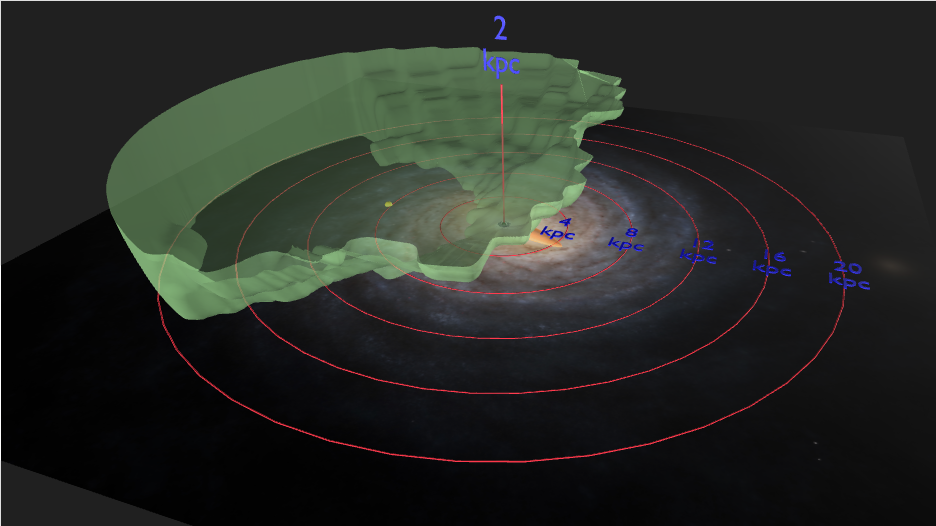Explanation for non-experts
When astronomers observe stars in order to study their physical properties, the observations are typically limited to the brightest stars that can be seen with a telescope. As a result we observe only the stars that are located out to a maximum distance. Beyond this distance the stars are too faint for us to observe. Thus when we survey the skies we tend to “select” the brightest and nearest stars which are easiest to observe. Depending on how powerful the telescope is that we use, or how sensitive the device behind the telescope that measures the light from the stars, we observe a different selection of stars out of all the stars that exist in the Milky Way galaxy. This process is described by the “selection function” of a survey, which tells us the probability that a star with given observed properties can be detected by our telescope and measurement device. The selection function in turn allows us to derive the fraction of stars of a given type that our survey can detect, known as “completeness”.
Since its launch in 2013 the European Space Agency’s Gaia mission has been collecting fundamental astronomical data (distance, motions, and astrophysical properties) for billions of stars in the Milky Way. The Gaia survey of the sky is also limited in reach by its selection function. The GaiaUnlimited project goals are to determine the mathematical form of the selection function so that it can be used by astronomers in analyses of the Gaia data.

This interactive page (screenshot above) shows an example of what the Gaia completeness map looks like for a specific type of star, Red Clump stars. These are stars that are intrinsically very bright (so they can be seen over large distances) and all have more or less the same intrinsic brightness, making them extremely useful to mapping the 3D structure of our Galaxy, the Milky Way. The interactive page shows a Milky Way map overlaid with a 3D mesh that indicates the volume over which a certain completeness is reached. For example, the mesh at 20 per cent completeness indicates out to which distance from the Sun we can be sure to have seen at least 20 percent of all the Red Clump stars. The maximum distance varies due to varying amounts of dust between us and the stars, as the intervening dust causes an additional dimming of starlight. This information is used to ensure that astronomers can correctly infer, for example, the true number of Red Clump stars versus distance from the centre of our Galaxy.
The map below shows a summary view of the reach of Gaia in terms of how complete our view of Red Clump stars is within the Milky Way galaxy. It is a version of the above interactive map showing the completeness within about 100 pc (300 light-years) from the Milky Way disk’s midplane.

